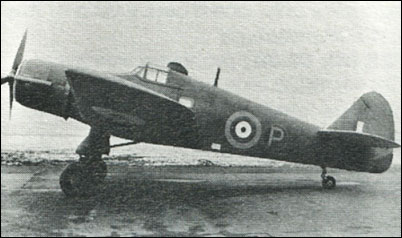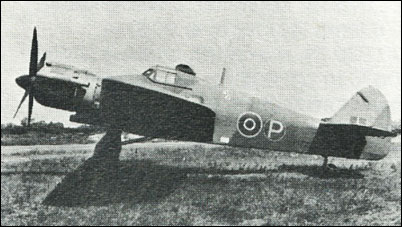 |
Folland 43/371940 |  |
| ENGINE TESTBED | Virtual Aircraft Museum / United Kingdom / Folland |
 |
Folland Aircraft Ltd had its foundations in February 1936 at Hamble, Hampshire, when British Marine Aircraft Ltd was formed with the intention of producing the Sikorsky S-42A flying-boat under licence. This scheme came to nothing and in May 1937 the company underwent a complete reorganisation and change of name. H. P. Folland, formerly chief designer of the Gloster Aircraft Company, became managing director, and the firm initially undertook sub-contract work. A series of projects beginning with Fo.101 remained paper designs only, and the firm's first real aircraft was the Folland Fo.108, designed to meet Specification 43/37 for an engine testbed. Per-cival and General Aircraft also tendered, but Folland won the contract for a batch of 12, surely the first aircraft designed specifically for engine testing. A large, single-engined, low-wing monoplane with fixed landing gear, the Folland 43/37 was as big as a Bristol Beaufort and considerably taller. Resembling a scaled-up Hurricane, it accommodated a pilot and two observers in a large cabin with complete instrumentation for monitoring engine performance in flight. Construction was mixed, the semi-monocoque fuselage of light alloy while the wings and tail were plywood-covered. Split trailing-edge flaps and automatic wingtip slots were fitted. Testbed aircraft lack the glamour of operational types, but the Folland 43/37 accomplished a wealth of interesting test programmes. Engine installations included differing versions of the Napier Sabre, Bristol Hercules and Centaurus, and Rolls-Royce Griffon. The fifth aircraft was used later by de Havilland for propeller tests. The first was delivered in 1940, and the first recorded loss was on 28 April 1944 when the eighth aircraft crashed on take-off from Heston during Bristol Centaurus IV tests. Centaurus Is and IVs rapidly disposed of three more Folland 43/37s in only three weeks, the third, first and second aircraft being lost on 28 August and 14 and 18 September 1944 respectively. The sixth aircraft was also lost on 14 September while fitted with a Sabre I. The only other recorded fates are two struck off charge in 1945: the eleventh on 5 March after testing the Hercules XI and the fifth on 27 March after Rolls-Royce Griffon tests.
|  COMPANY PROFILE | ||||||||||||||||||||||||||||||||||||||||||
 |

|

